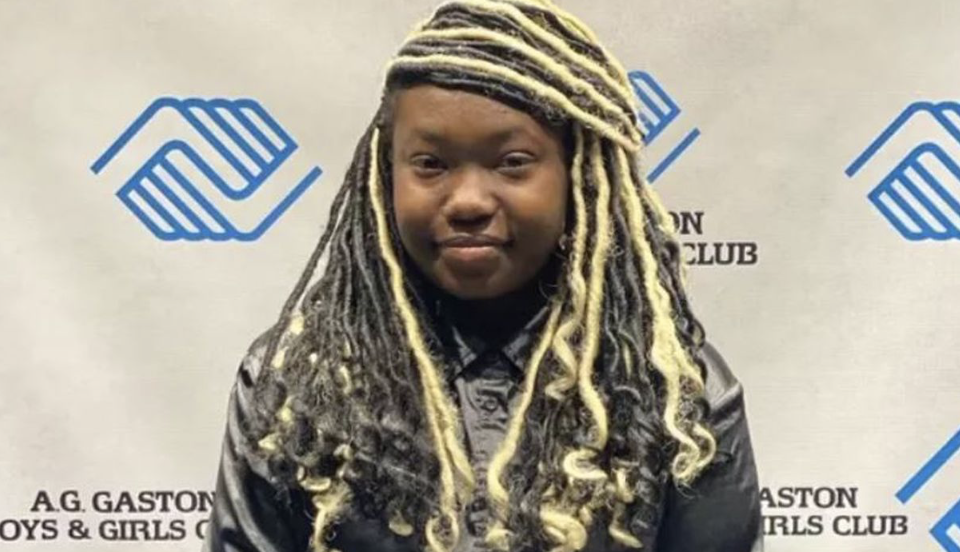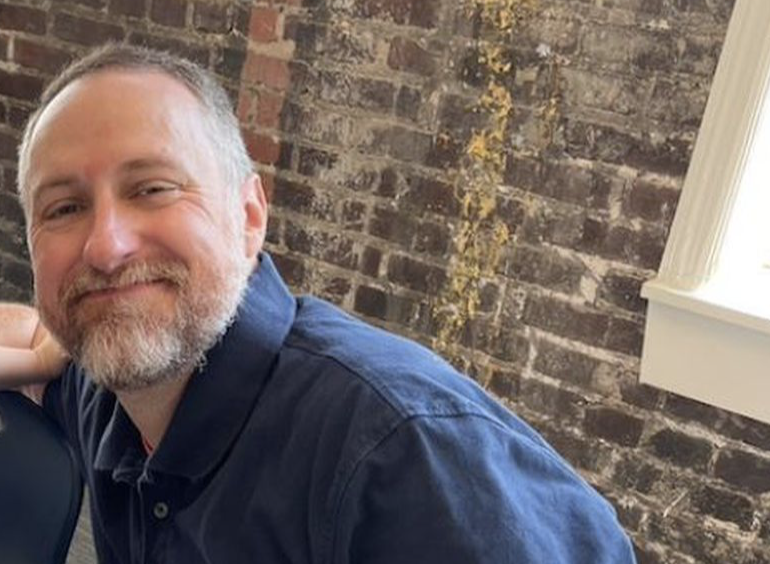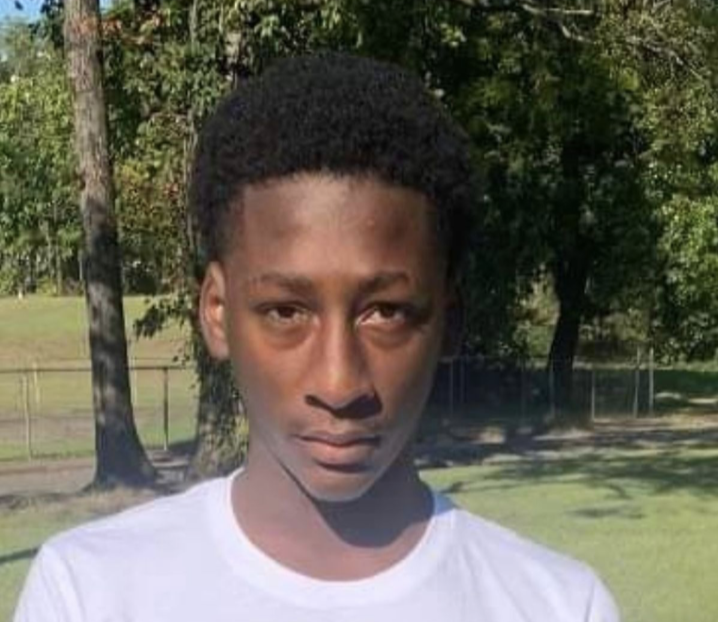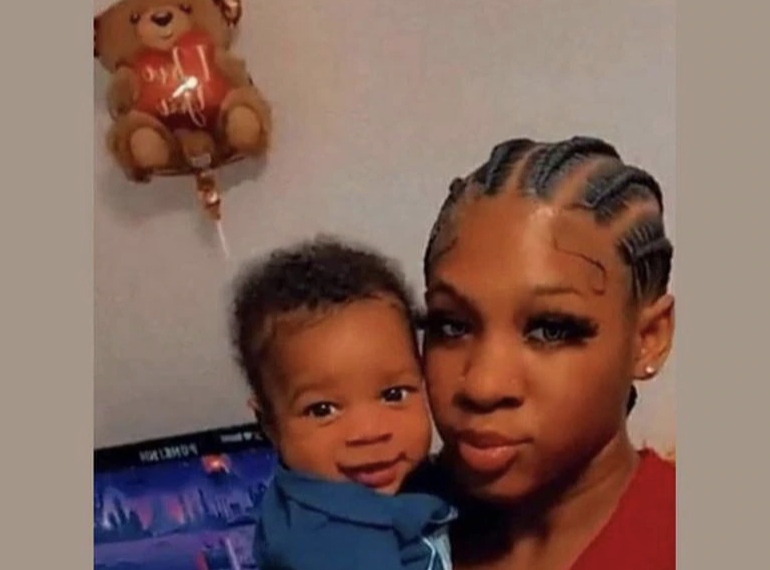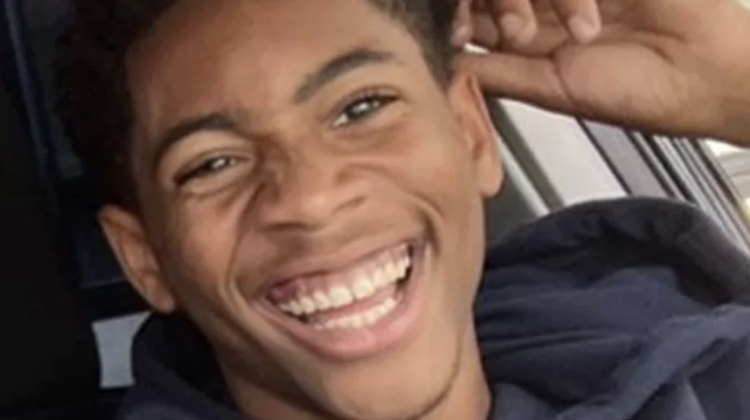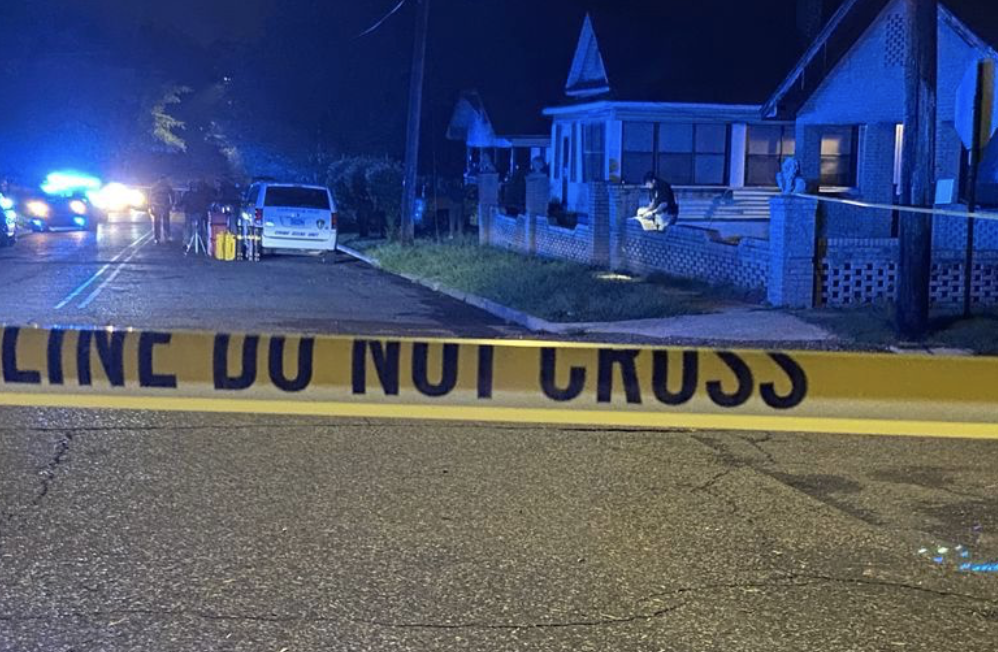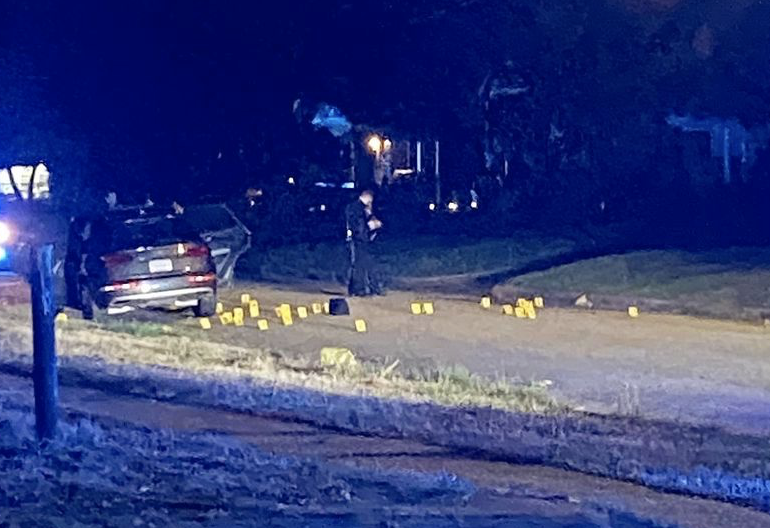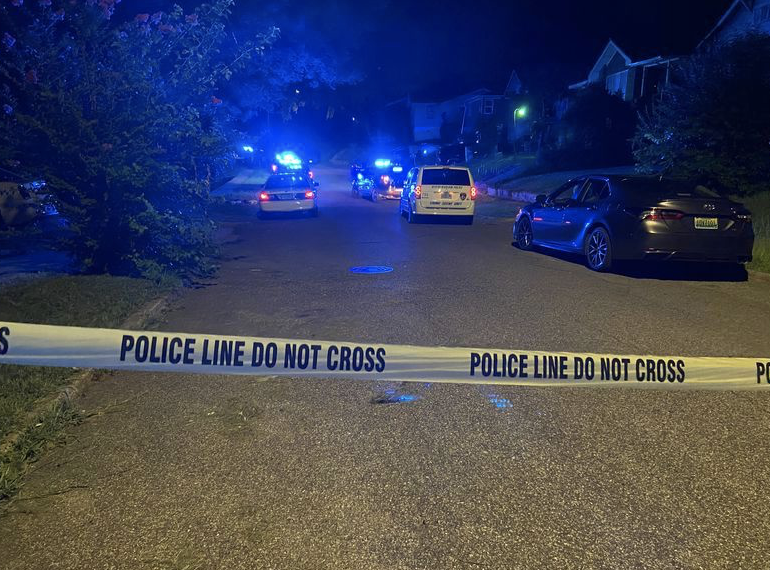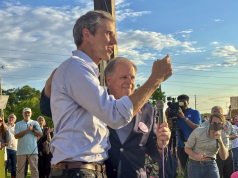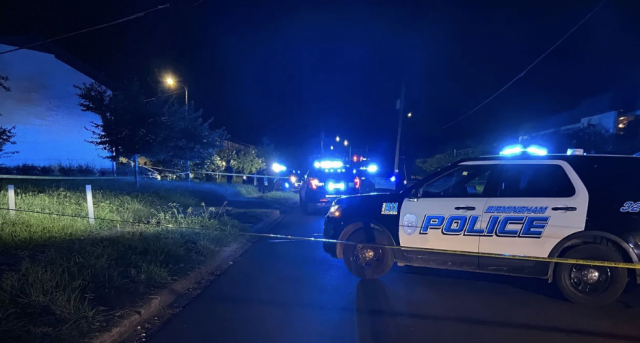
By Barnett Wright
The Birmingham Times
First in a series
Earlier this year, Yasmine Wright, a 10th grader at Wenonah High School, left her job at the Birmingham Zoo after working her shift, something she had done for weeks prior. The 16-year-old never made it home. Yasmine was killed by stray gunfire that also left another man dead.
Two weeks later, Javarius “Deno” Reid, 17, was killed when he was caught in crossfire at a North Birmingham intersection. The Carver High School junior was on his way home in a vehicle with friends when gunfire rang out in and around the 2900 block of 16th Street North.
Those deaths were in January 2022, and since then the gun violence has increased in the Magic City, destroying families and communities and traumatizing students who attended school with the murdered teens. Then came August, when seven people died from gun violence over six days, including one period during which there were four homicides in under four hours.
Just last week, another homicide gripped the city. Remains found in a burning abandoned house in West Birmingham were officially confirmed as a husband and father of four who had been reported missing. Police identified the remains as those of 42-year-old Nathan Gemeinhart and said evidence showed that he had been a victim of homicide.
The 2022 homicide numbers in Birmingham are grim. On Wednesday, an argument in Birmingham’s Gate City neighborhood turned deadly. Police found an adult male unresponsive. He was taken to UAB Hospital where he was pronounced dead a short time later. The victim is Birmingham’s 97th homicide so far this year. Currently, the city is on pace to reach nearly 150 homicides. The highest number in recent memory was 141 in 1991, according to AL.com’s Carol Robinson.
Police have said overall crime is down but tackling some of the homicides can be “frustrating” especially when some of the violence occurs inside a house or a vehicle.
“It makes it hard for police to intervene,’’ said Police Chief Scott Thurmond in a July interview with AL.com. “How do you look and see what’s going on in a residence? How do you look and see what’s going in every vehicle in our city? It’s very frustrating.”
Beginning today and continuing through the end of the year, AL.com and The Birmingham Times Media Group will collaborate on a series of reports with a focus on contributing factors that may have fueled the high rate of homicides in 2022 and magnifying the voices of those who are affected by violence or working in areas to reduce some of the crime.
Additional reporting and storytelling will be provided on a biweekly or monthly basis, covering topics that include but are not limited to domestic violence, education, guns, and accountability. This partnership will also look at solutions offered by those who work daily in this space, including law enforcement, community activists, and mental health professionals.
Some of those voices are contained in this article which will be elaborated and highlighted in future installments of the series.
Families
The pain of gun violence is felt no more somberly than among families who have lost loved ones.
“There’s not a day that goes by that I don’t cry because [my son, Kavas], will be greatly missed forever as long as my heart beats,’’ said Akita Jemison, whose 16-year-old son, killed on July 23, had just completed the 10th grade at Jackson-Olin High School. Kavas was found in the back seat of a sedan on Interstate 59/20 in Birmingham, dead from a gunshot wound to the head.
“I want people to know the steps I took as a mom,” Jemison, a single mother who has two other children—a 13-year-old son and an 11-year-old daughter—told AL.com’s Robinson. “It’s hard when you’re doing it on your own and trying to bring up your kids the right way.”
Jemison said she wants her son to be remembered as loving and kind, and she will advocate for other children not to meet the same fate.
“These kids need something to do,” she said. “I will fight for that until the day I die. I couldn’t save my son, but maybe I can save someone else’s.”
Ja’kia Winston, 19, was shot to death on Sunday, August 7, 2022, when gunfire erupted during exhibition driving in Birmingham. She leaves behind an 8-month-old.
“Ja’Kia Winston wasn’t just your typical 19-year-old. To know her was to love her,” her mother, Keizia Gaines, said in a GoFundMe request. “She was ambitious, outgoing, and independent. But, most importantly, a great mother who loved her 8-month-old son more than life itself.”
Gaines started the GoFundMe to help with her daughter’s funeral, which was held on August 20.
After Gemeinhart was identified, his family released a statement last week that said in part: “We are heartbroken by the loss of our Nathan. He was good, kind, and faithful. He was funny. He listened well. He worked hard. He never met a stranger and never, ever turned down a plate of Tex-Mex. Nathan was a gifted musician who enjoyed teaching his children the names of instruments and blues musicians. He loved Jesus.
“He absolutely adored being a daddy. He delighted in his family and friends. His love for his wife was patient, tender, and unending. We miss him terribly and will grieve his absence the rest of our days.”
Counselors
Statistics show that 90 percent of all Birmingham homicides involve guns, and 86 percent of those victims are Black, said Mark Wilson, M.D., health officer for the Jefferson County Department of Health, who has said gun violence is a public health crisis.
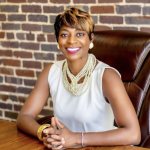
Crystal Mullen Johnson, owner of Birmingham-based Strive Counseling Services, said some young people resort to gun violence because of “environmental factors.”
“They may re-enact what they are witnessing in their community because they don’t have the proper guidance in place to teach them healthy boundaries or to teach them conflict resolution,” she said. “There are parents that raised their children with a mindset that ‘If someone hits you, you hit them back,’ so then they retaliate.”
“Some children in the home see adults with guns,” she added, and “it becomes a visual for that child. … It becomes a norm, and they integrate that norm to their thought process on how to handle conflict.”
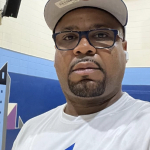
Jap Jones, 43, is a former gang member and founder of The Opportunity Center in the Ensley area. He said many young people are surrounded by violence and agrees it’s mostly what they see.
“When they pick up their phones and look at their news feed, all they see is people they idolize, whether it’s rapping or getting money illegally. They think that’s what they have to do in order to be somebody, to be part of something to get attention or love, and to not get bullied.
“When I was doing some of the stuff these teens are doing, I didn’t think I was doing anything wrong. It seemed normal to me because that’s what I saw growing up,” said Jones, who was incarcerated at age 14 until age 18.
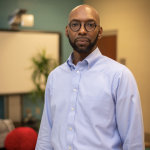
Calvin Thomas is a behavioral health therapist with Alabama Regional Medical Services (ARMS) who works out of Wenonah High School in Southwest Birmingham and interacts with young adults and Birmingham City Schools (BCS) students on a nearly daily basis—many of whom are grieving gun violence deaths and facing other challenges.
Earlier this year, six teens in the city were killed between January 1 and March 10, although one of the shootings was later ruled a “justifiable homicide” by the Jefferson County District Attorney’s Office. All were 18 or younger.
A large part of Thomas’s approach as a therapist is ensuring that he provides a safe place for those who turn to him for support: “I really try to focus on safety and letting them know I’m here for them. It is not about me. It’s really about them having that space to process and be who they are to try to wrap their minds and their hearts around the situation.”
Activists

Cory Pettway is a community liaison for Birmingham City Council District 5 Representative Darrell O’Quinn. Outside of City Hall, Pettway is a board member of the Alabama River Alliance and a member of the NAACP Birmingham chapter, among other civic organizations. He believes more needs to be done to reach young adults.
“In my eyes, there is a lack of things for the youth to do. There is a lack of opportunities for children, for youth, for adolescents, for teenagers, and in between, to actually commune with each other, play basketball with each other, go to a park together, whatever the case it may be, to where they can build a relationship, so the first time they interact with somebody, it’s not when something went wrong,” said Pettway.
Jones, with The Opportunity Center, said “it’s easy for young people to pick up heroin, cocaine, and guns, but they definitely need something else…and we have to give it to them. At The Opportunity Center, we [offer steps] like teaching them how to start their own business centered on making money that way.”
He added, “We want to start with the ones that have not been tainted by the streets yet. Some of the ones that are 25 or older will hopefully have a change of heart and come and work with us, but it has to start with us giving our youth something different to do.”
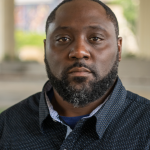
Eric Hall is co-founder of the Birmingham Black Lives Matter chapter, a fellow with Jobs with Justice’s Advancing Black Strategies Movement, an executive director at Peace Baptist Missionary Church, and co-chair of the Birmingham chapter of Our Revolution.
“For a lot of the younger guys who are committing acts of violence, engaging in violent crime, there are some other issues that exist,” he said. “A lot of those issues are due to lack of resources, not being able to be gainfully employed or sustain employment. I feel like if those guys had other opportunities available, if, in fact, they had a livable wage and were able to sustain themselves and a family, … they would not position themselves to become involved in illegal activity, whether it’s selling drugs or whether it’s robbing,” said Hall.
Scholars
The number of police officers in Birmingham has declined 3.07 percent over the past five years, according to a review of city budgets, but the murders have not. Homicides in Birmingham five years ago were at 111. Through August 25 of this year, it was at 87.
The Fiscal Year (FY) in Birmingham begins on July 1 and ends on June 30, and here is the number of police officers in the city from FY2017 through FY2023
FY2017: 749
FY2018: 747
FY2019: 743
FY2020: 743
FY2021: 738
FY2022: 738
FY2023: 726
There are those who don’t believe more police is the answer. Kathryn Morgan, Ph.D, a professor of Criminal Justice and African American Studies at the University of Alabama at Birmingham (UAB), is one.
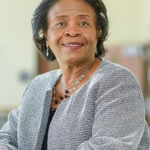
“Police can’t do it all by themselves,” she said. “Putting more police on the streets has been tried historically in other places, and that hasn’t always worked. It just it creates a problem between the community and the police department because [people ask], ‘Why are you always in our neighborhood?’”
She added, “There’s a lot of police activity to clean up one neighborhood, and the problem is that the criminals just go to the next neighborhood. So again, it’s just more complicated than just saying, ‘Let’s do this. Let’s just try this.’ We’ve got a lot of people out doing things, like ministers who do prayer walks. …[That] is fine, but you also need policies.”
Jarralynne Agee, Ph.D, provost and senior vice president of academic affairs at Miles College, knows how difficult it is to get every person, agency, and system to work together, especially on one goal such as stop the violence. Agee, who formerly worked as a civilian and social service professional, said violence reduction is “an aspirational goal, like world peace, curing cancer, or eradicating child hunger. We all want to work toward that, but achieving it takes an entire ecosystem.”
“I think the first step is to focus on individual gains,” she added. “Where we can make an impact in a neighborhood, a community, or even within a family is one way to have a profound and sustainable change in reducing violence.”
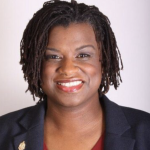
Often overlooked, Agee said, is the fact that people can be territorial about violence reduction.
“What might be a solution in one ZIP code might fail in another community. Let us support each other more by recognizing that solutions to build up society do not come from one source or another. It comes from far more collaborative action.”
What Can Be Done?
Agee and others agree that likely solutions will require the efforts of more than just one office, department, or agency.
“We think it’s the [responsibility] of the mayors, school systems, courts, or even police to stop or reduce crime,” said the provost. “Those factors are critical pieces in the puzzle that are often reactive and large-scale. Even the mayor, district attorney, and all the judges you know would tell you that true community transformation comes from within the community.”
UAB professor Morgan said, “I think one of the things that could happen, that should happen, is to create an opportunity for people living in these neighborhoods, to sit down at the table and talk about how they see their neighborhoods and how they propose to work through some of the issues.
“Some of the most successful programs [designed to] address issues in communities occur when community members sit down with officials, talk about what’s going on in their neighborhoods, and come up with problem-solving strategies.”
Last month, after a night of city violence when four people were killed in four hours, Woodfin issued a statement that said in part, “Our police will do everything possible to protect the public and investigate crime. … But each of us must ask the question: ‘What am I willing to do to change the situation?’ As a community, as families, as individuals, we must act responsibly and demand responsibility from those we influence and interact with in our daily lives.”
Birmingham Times staff writers Nicole S. Daniel and Ryan Michaels contributed to this article.
Updated at 10:40 on 9/2/2022 to include latest number of homicides.



